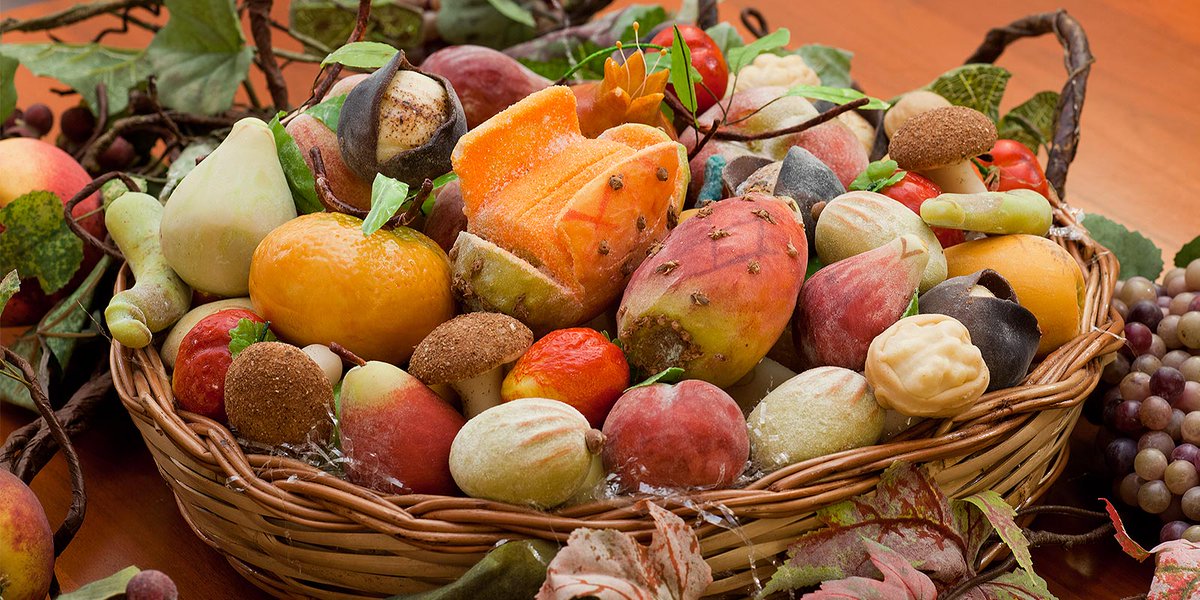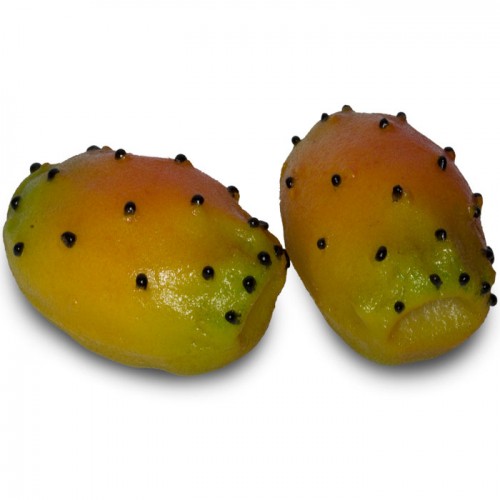Martorana Fruit
- Details
- Category: Gastronomy

The verisimilar fruits made with almond paste and sugar (a sort of marzipan) were an invention of the nuns of the Benedictine monastery of Santa Maria di Martorano, or "La Martorana" in Palermo, founded at the end of the century XII by Aloisia and Goffredo di Martorano, master judge of the Magna Curia Regia of Sicily.
The invention of the Martorana fruit is attributed to a specific event: in June 1537 the Emperor Charles V, King of Sicily, is said to have visited the monastery of which was known the lush garden of orange trees. Given the season, however, the trees had no fruit, so, to not disappoint the distinguished guest, the nuns would have realized the artificial fruits with colored almond paste, decorating with faux oranges and fruit of varying season all the trees of the cloistered complex.
The spectacular effect would particularly hit the Palermo court, from which in a short time it would spread the tradition to order specially packaged Martorana fruits, then also called "royal paste".
With the diocesan synod of Mazara in 1575, however, the nuns were forbidden to continue in the packaging of these fruits (like for other traditional sweets such as the cassata), on the pretext that they bore too much distraction, to give the monopoly to the corporation of Confectioners, however keeping the original name.
Today, as at that time, the Martorana Fruit is one of the most striking examples of ephemeral art for the table, typical product and pride of the Sicilian pastry.







